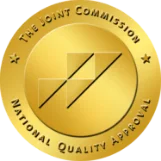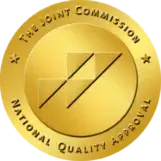It is estimated that 322 million people across the globe live with depression. While there are many effective treatments for depression, some methods may be invasive or ineffective for treating each individual.
Although treatment modalities are on a trial-and-error basis, it can be discouraging to see little to no improvement after seeking help. But, an innovative approach, using Transcranial Magnetic Stimulation (TMS), combined with other forms of therapy, may help a wide range of people dealing with depression.
Understanding Depression
There are different types of depression that affect the world such as Major Depressive Disorder, Persistent Depressive Disorder, (dysthymia), Premenstural Dysphoric Disorder (PMDD), Adjustment Disorder with Depressed Mood, and Seasonal Affective Disorder (SAD).
All of these types of depression have similarities but ultimately are unique. While the exact cause of depression is unknown, it is believed that certain factors, aside from a chemical imbalance in the brain, may contribute to depression.
Possible Causes of Depression:
- Genetic vulnerability–depression can be passed on through generations of a family
- Medical conditions–terminally ill people and people dealing with serious illnesses may struggle to cope with their illness if they are in pain or are stressed from medical treatments
- Substance abuse–using drugs and alcohol can result in depression as their effects can imitate the symptoms of depression
- Traumatic life events and stressors–abuse, loneliness, violence, isolation, death of a loved one, loss of a job, financial hardship, and other traumas can lead to depression
- Personality–people who are prone to sadness, have low self-esteem, are high-strung, have obsessive tendencies, struggle with criticism, and who are pessimistic are at risk of depression
Symptoms of Depression Can Include:
- Feeling hopeless
- Insomnia
- Excess sleeping
- Feeling worthless
- Aches and pains
- Canceling commitments
- Loss of interest in hobbies
- Restlessness
- Fatigue
- Chronically sad
- Weight loss or weight gain
- Thoughts or attempts of suicide
Transcranial Magnetic Stimulation (TMS)
TMS therapy is a procedure that stimulates the nerve cells in the brain using a changing magnetic field, similar in strength to an MRI’s magnet. It targets areas in the brain that are underactive and thought to control moods.
What to expect during TMS Treatment
Typically, a treatment will last 60 minutes. A medical professional will need to give a dose of stimulating pulses. To deliver the magnetic pulses, a stimulator will be connected to a magnetic coil that connects to the scalp. A medical professional will need to determine where to place the magnets on the patient’s head and how much energy to deliver.
Once that is decided, the coil will be turned off and on to produce the pulses, making a tapping or clicking noise. A patient may feel sensations on their head. The facilitator may need to test out the dose to set the patient with the right treatment.
If that is the case, the intensity level of the charges will increase and the patient may react with twitching. To be most effective, TMS requires several treatments.
Is TMS safe?
TMS is noninvasive and typically received positively. Some side effects include lightheadedness, headache, and facial spasms. Rare but serious side effects include seizures, mania, and hearing loss. These extreme side effects may be triggered by preexisting conditions such as severe headaches, bipolar disorder, psychosis, brain tumors, epilepsy, and even medication can cause a reaction.
However, most patients that undergo treatments are able to continue with their days without supervision, and can even drive right after the procedure.
Depression can happen to anyone and it is a common condition. If you are coping with depression or recognize that you are depressed, you may find reassurance in knowing that it is treatable–even if the path to recovery is slow and bumpy.




















